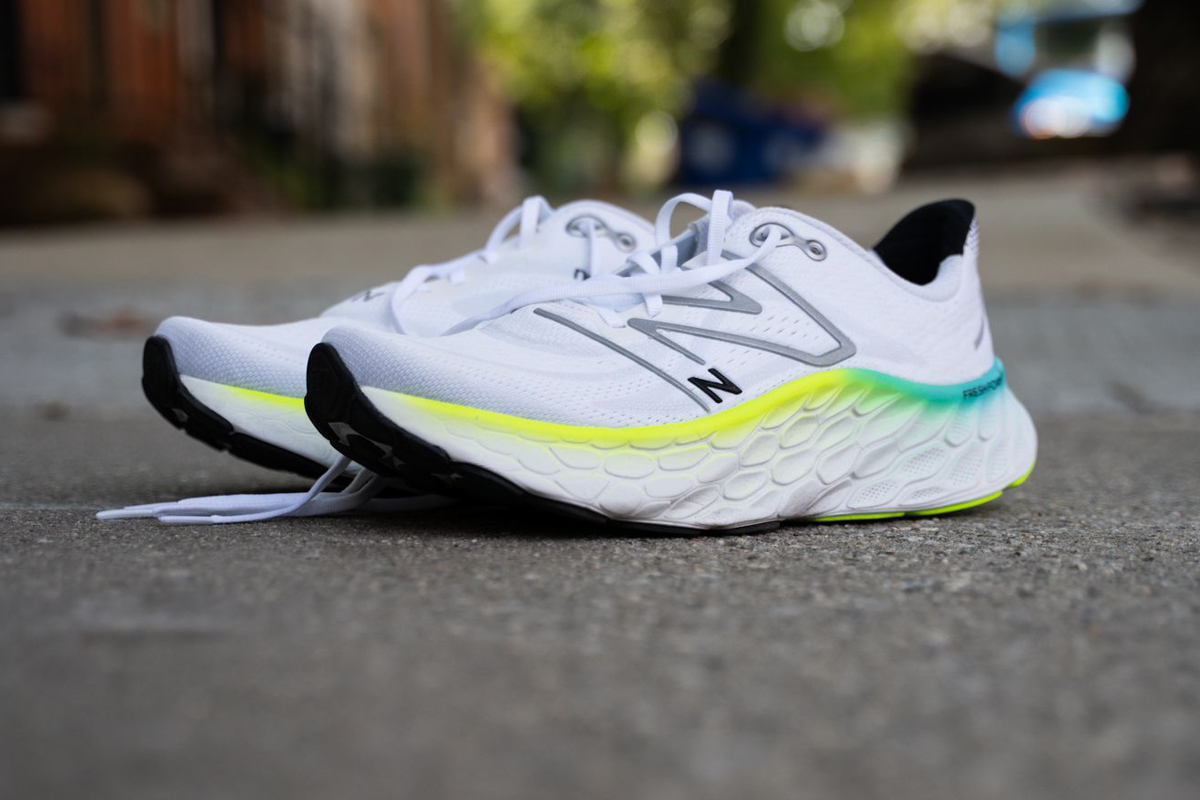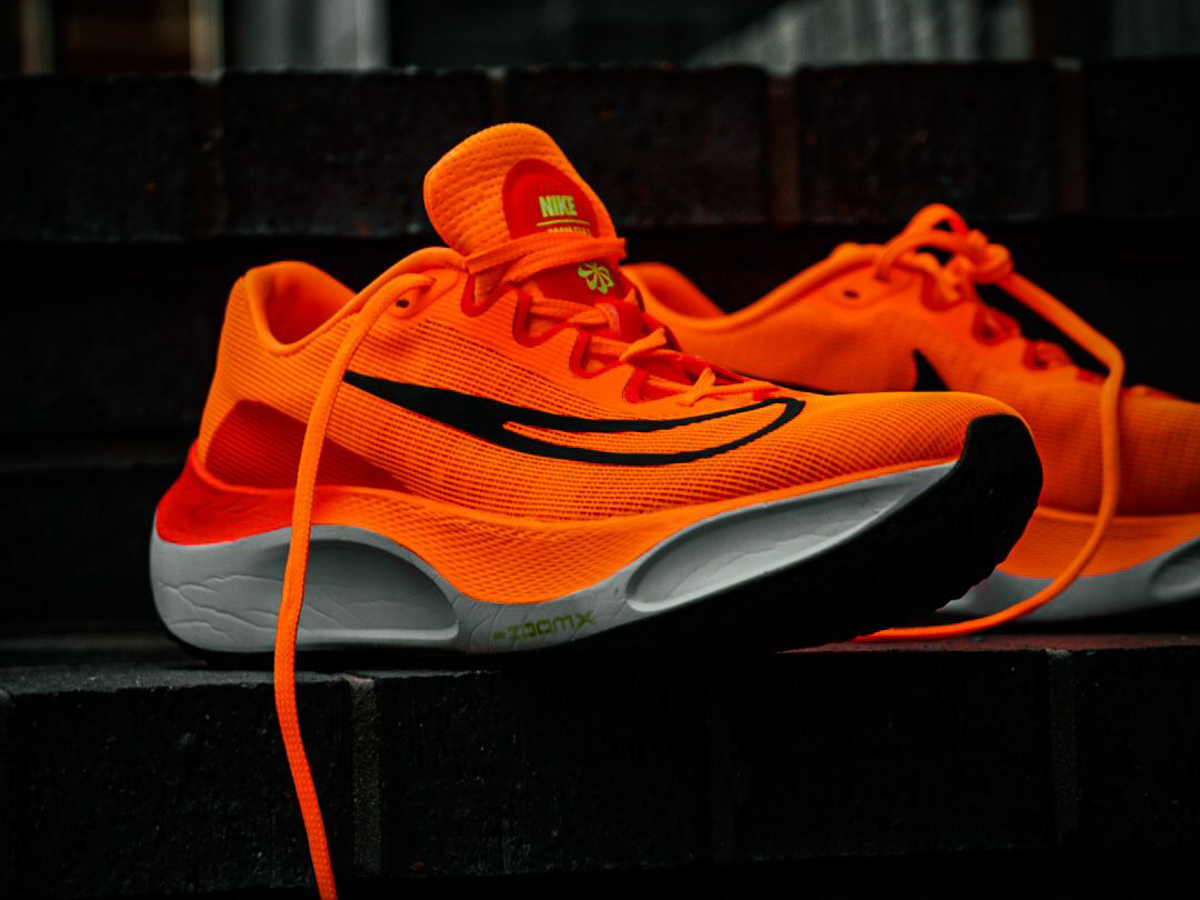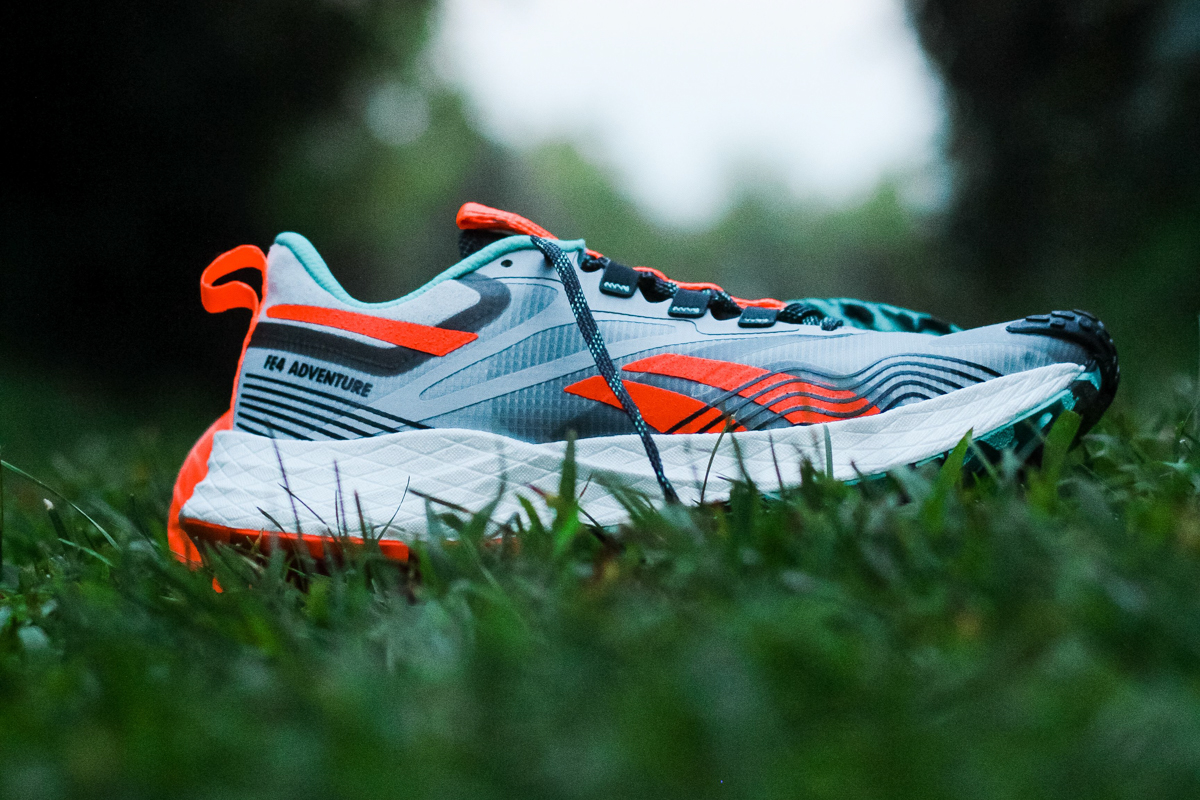
Weighs 9.6 oz. (272 g.) for a US M9/US W10.5
A light-ish road-to-trail hybrid that’s easy on the eyes (and wallet)
Proof that low-stack shoes can still be fun
Alright, it’s like 80% road, 20% trail, but still a hybrid
Available now for $120
SAM: Thousands of things have a quiet potential to affect your daily run. Honestly, even daily miles can feel like a dance with the butterfly effect — the slightest change in fuel, hydration, rest, or weather can make it or break it. As runners, we go out not only in spite of this but because of this. Variability is spice, whether you get caught in a sudden hail storm or just have to cross the street because of construction. We like our runs with that spice because even the best routes get old when you’ve run them for three weeks straight.
In the quest to overcome the rut, we might even loop short regional trails into our runs, especially those of us who live in cities where small trail networks are commonplace within running distance. But, this creates a shoe problem: road shoes often don’t quite cut it on trails, and trail shoes are usually pretty miserable to put long road miles on.
To find a happy in-between, shoe companies have given us hybrid shoes that are built to transition between roads and trails seamlessly. Exemplary shoes in this range include the Nike Pegasus Trail 4, Hoka Tecton X, and Altra Outroad. To this end, the Department of Outdoor Amusement at Reebok has offered the Floatride Energy 4 Adventure (we know because they’ve emblazoned the name in three different places on the shoe), which is a trail modification of their budget road shoe, the Floatride Energy 4.
I’m a big fan of building to purpose, and I have to admit that I was mixed on the idea of a hybrid shoe, so the Reebok Floatride Energy 4 Adventure had to be pretty great to live up to what I wanted. The most recent iteration of the road version (Floatride Energy 4) is one of our favorite budget running shoes, so let’s see if Reebok can spread that goodwill into the dirt and vert.
MATT: Have we advanced so far in the past few years that if a shoe does not boast a carbon plate, a mile-high stack of super foam, a high-end BOA lacing system, or some other funky feature, we toss it to the wayside? Is there still a place for a versatile running shoe that fits, looks, and feels like a traditional shoe? What if the price of that shoe didn’t qualify for installment payments — then would you be interested?
Reebok produced a shoe for the roads that checked those boxes above in the Floatride Energy 4. The Floatride Energy 4 Adventure looks to build off that sturdy base and provide a more rugged and versatile version that can handle the roads less traveled.
Mixed-use, hybrid, road-to-trail models fit a definite need in the running market, as the appeal of having the flexibility to map out routes that combine roads and trails has soared in the last few years. We can’t forget the convenience of running a few pavement miles from the front door to the nearest trailhead (for those like myself that are fortunate enough to have that proximity).
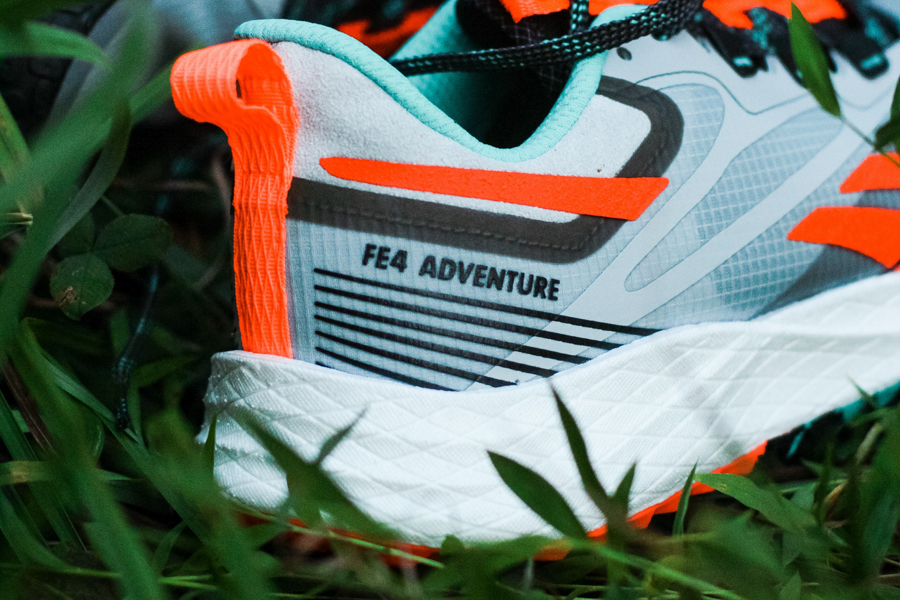
SAM: This is simply a good-looking shoe. The release colorway is a sharp grey/teal/orange that is reserved but with just enough flair to catch the eye. I love it. Others seemed to as well — I had several compliments while heading out on runs. My wife even spoke up about it unprompted. She responds to most of my running shoes with an expression that deftly balances a shrug and a grimace, so this should be considered high praise.
The Reebok Floatride Energy 4 Adventure is billed as a city shoe, so I headed out on the streets around my house in Baltimore with it to get my first miles in. Early August in Baltimore is a brutally hot time to run, but the recycled ripstop uppers on the shoe were surprisingly breathable. It fit well, and after even longer efforts, I had no pinch points or excess rubbing.
On roads, the Energy 4 Adventure laced down securely, and I didn’t have the crank on the laces or use lacing tricks to keep my heels set. The tongue is very thin — it recalls ultra-lightweight tongues you find on racers like the Asics Metaspeed Edge+ — but it’s comfortable and doesn’t slide around.
Running in the shoe is good fun. It’s light and responsive and feels nimble on your feet. There isn’t anything specifically fast here, but I found the shoe comfortable at speed, with enough midsole flex that you get a feel for the road or trail beneath your feet. I really enjoyed my miles overall.
I was pretty hesitant about the Floatride midsole with its basic TPU construction. At a mere 17.5mm in the forefoot, I worried it would drop my foam-coddled feet too close to the hard, mean concrete. Even the heel comes in at only 26mm, which is one measly millimeter thicker than the midsole in the Altra Lone Peak, which I gave up on because it was too thin for me. I was pleasantly surprised to be wrong. I really enjoyed the Floatride’s ride (sorry). It’s on the firm side but has plenty of shock absorption for daily runs. I even wore the shoe on a 19-mile run (with a 20-minute break every 4 miles — a particular race-type format that gave my feet a break), and my feet felt reasonably good by the end. The Floatride foam is comfortable but springy, lightweight, and surprisingly durable. I’ve seen hardly any breakdown after 60+ miles.
The outsole is of similar durability. Usually, trail outsoles take an absolute beating from road miles — the pavement just loves easily digestible lug rubber — but I have less wear on it than I’ve had on some pure road shoes at similar mileage. It also bites well on dirt and loose gravel, but you don’t get that running-on-claws feeling most trail shoes give on the pavement.
MATT: As Sam said, the Reebok Floatride Energy 4 Adventure has a really clean design to it. It isn’t overly flashy, and with a relatively low stack compared to today’s trends, can seem a bit unassuming. I’d say it feels a bit like a throwback from the late 90s or early 2000s, complete with the Miami Dolphins colorway.
The fit is true to size and has a really good step-in feel, balancing comfort and security. As a hybrid/trail shoe, it’s actually decently weighted, with my US M10 coming in right around 10 oz. — not gonna be mistaken for a racing shoe, but won’t feel like a tank when hitting the pavement either.
The upper material was interesting to me. It’s a recycled plastic ripstop that’s almost see-through. I found it very similar to what Atreyu adopted on the Base Trail.
The Floatride midsole was a pleasant surprise to me. I was equally as impressed as Sam with the pleasant smooth ride, and despite the low stack, I didn’t feel like I was taking a pounding when on the blacktop. I’ve been leaning towards softer foams of late, and I have to give it to Reebok because this Floatride midsole really provides a nice ride.
While the gravel bike-inspired outsole adds some weight, I found that the shoe would perform just fine as a road daily trainer, as none of the trail-specific features are overly aggressive or prominent. I took the shoe on two road-only runs and had zero issues with the ride.

SAM: You may have noticed that the majority of my Good section dealt with road miles. While the Reebok Floatride Energy 4 Adventure handles easy, mostly flat city trails well, anything more technical than “this is a road without pavement” puts it out of its depth. The midsole isn’t as stable as I’d like, and the upper lacks the structure to keep your feet from sliding around inside the shoes like puppies’ paws on a wooden floor.
My one run in which I slogged out every step of a moderately technical route convinced me to save this shoe for my city miles and gentle city trails. And while the wet pavement is alright, please stay off wet rocks and out of the mud when wearing Reebok’s hybrid option. The close-set lugs don’t handle uneven wetness, and they grab so much mud and dirt you feel like you’re taking the trail along with you.
While the midsole is great, and I had some alright luck with longer efforts, this is a 5k-10k shoe. Runs over 10k lay bare the thinness of the foam. You’ll sacrifice comfort and recovery time taking it on long runs.
And the laces — why are the laces so long? Why, on shoes with the smallest lugs in the densest groupings, am I forced to worry about tripping over my own laces? I caught a loop and nearly ate asphalt on a very easy 3-mile run. I understand as well that the laces probably need to go under and through the tongue loops to keep the thin tongue in place, but those loops make it nearly impossible to adjust lacing down the foot.
MATT: So my general gripe with the Reebok Floatride Energy 4 Adventure is that it’s never read the definition of adventure. Unless your idea of adventure is cruising the nearest recreation path alongside your kid’s bike or hitting the local crushed gravel rail trail, you might be a little lost here. If what I described above gets your adrenaline pumping and motivates you to go “X-Games mode,” then maybe this is the shoe for you.
It’s a hybrid shoe, but it really has no business running actual trails. Twisty single track and rooty, rocky East Coast trails are way too much for the Energy 4 Adventure to handle. The low stack construction didn’t translate as well from the roads, in my opinion, and the outsole rubber was really lacking. The lug shape and pattern did not provide good traction, and the close proximity between each lug caused mud and dirt to cake on the shoe.
I know laces can be replaced, but as Sam mentioned above, these may be the longest laces I have encountered on any shoe I’ve ever tested. Ever.
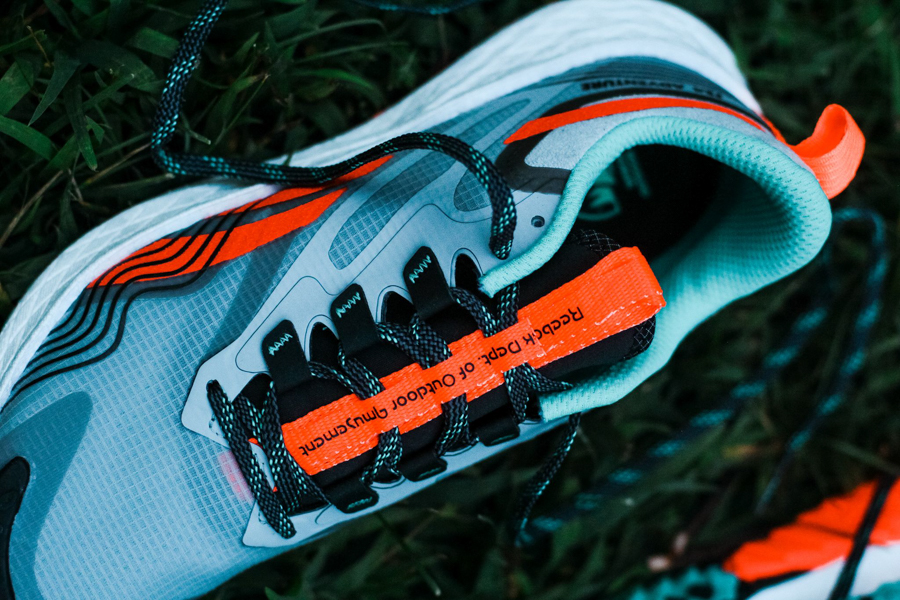
SAM: The Floatride Energy 4 Adventure is a good daily trainer with a burly outsole slapped beneath its midsole foam. It looks great, feels great, and hits a price point that is becoming cruelly rare in the running shoe community. If your daily run takes you by easy dirt or gravel trails, this shoe will let you loop those in without sacrificing grip.
Reebok tried to make a multipurpose shoe that can handle all terrains, and it seems that instead, they made a great shoe for a very specific kind of runner. It’s perfect — for your runs and for your wallet — if you need something for daily efforts less than 10k that includes both roads and easy trails.
That runner just happens to be me. I live in the middle of Baltimore with the Stony Run trail, Druid Hill Park, and Lake Roland within running distance, and it feels like someone at Reebok’s Department of Outdoor Amusement pointed out my neighborhood on a map and said, “Hey, why don’t we make a shoe for runners right there?”
Thanks, Reebok, you can count me as amused.
MATT: So the Adventure version of the Reebok Floatride Energy 4 basically checks all the boxes that gave Reebok a bargain budget winner with the road model, so in that regard, I think this is a winner. As long as you run similar trails to our guy Sam, and aren’t looking for a replacement for your trusty Speedgoat, then I think you’ll be happy with the value in this shoe.
I think this shoe could have a similar appeal as the On Cloudvista, the road-to-trail offering that we reviewed back in March. The models have similar strengths and weaknesses, and as I wrote about the Cloudvista, the Adventure would be an excellent travel shoe. You can wear it to the airport, out for drinks, and not be limited by shoe choice during a morning workout. Now you can think about what to do with the added luggage space you just saved.
You can pick up the Reebok Floatride Energy 4 Adventure for $120 at Reebok.com by using the shop links below.
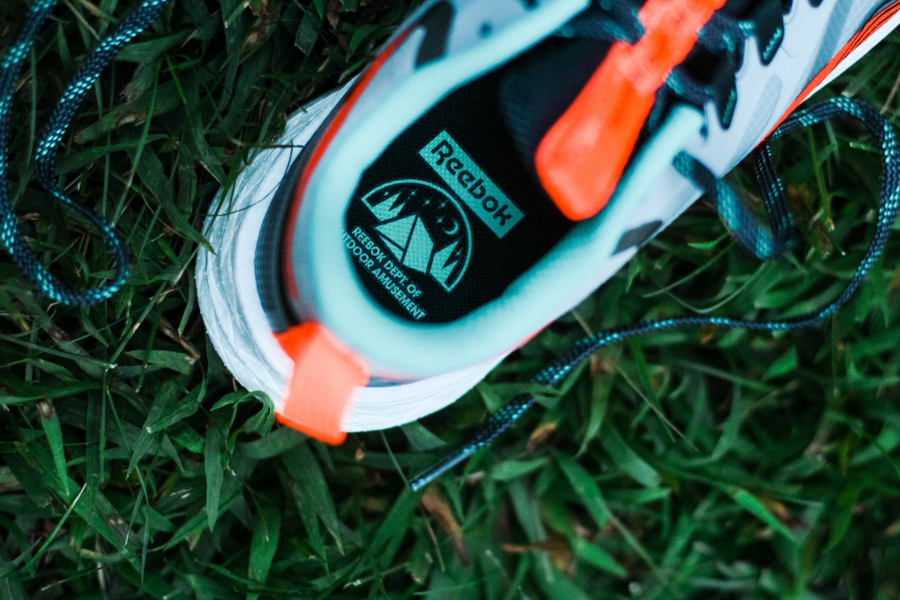
Want to learn more about how our review process works? Check out this guide.
Have something to say? Leave a Comment
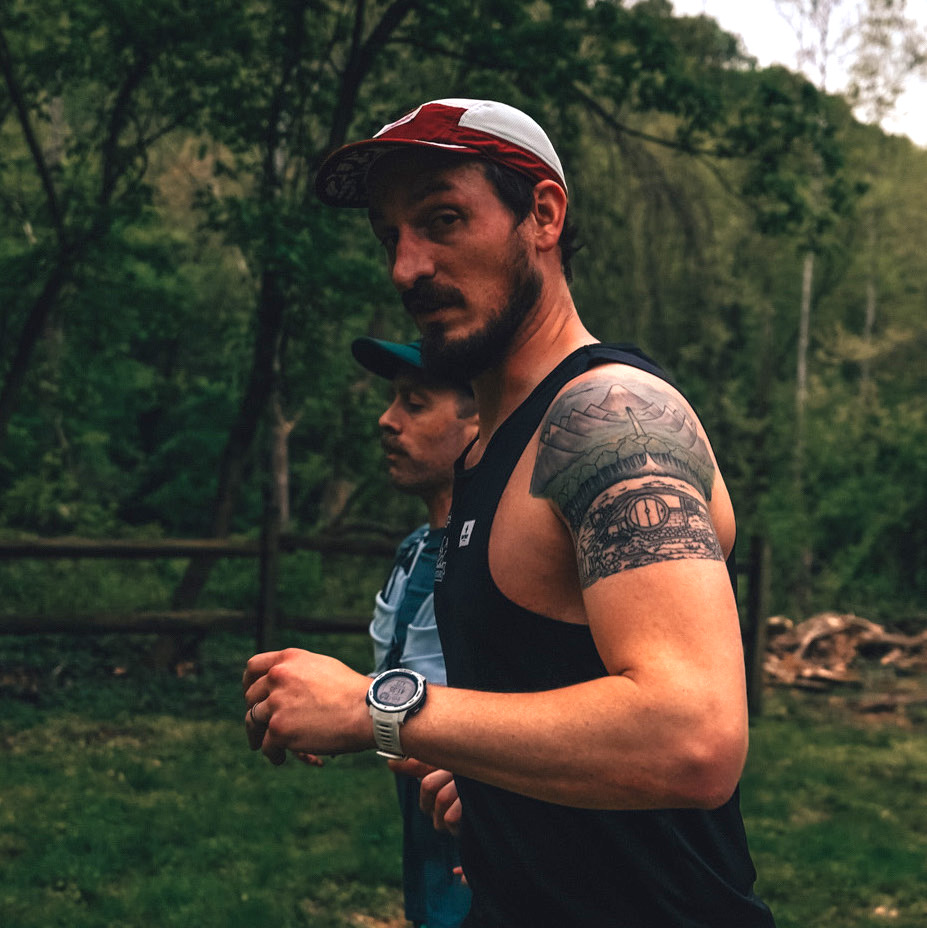
Sam lives in Baltimore with his wife and two kids and spends his days fixing espresso machines for Ceremony Coffee Roasters. He runs with the Faster Bastards when he can, races ultras, and has been working on completing the AT section by section. He thinks the best days are made of long miles on nasty trails, but that a good surf session, a really stunning book, or a day of board games are pretty all right too.
All-time favorite shoes: Saucony Xodus Ultra, Topo Athletic Ultraventure 3, Altra Lone Peak
More from Sam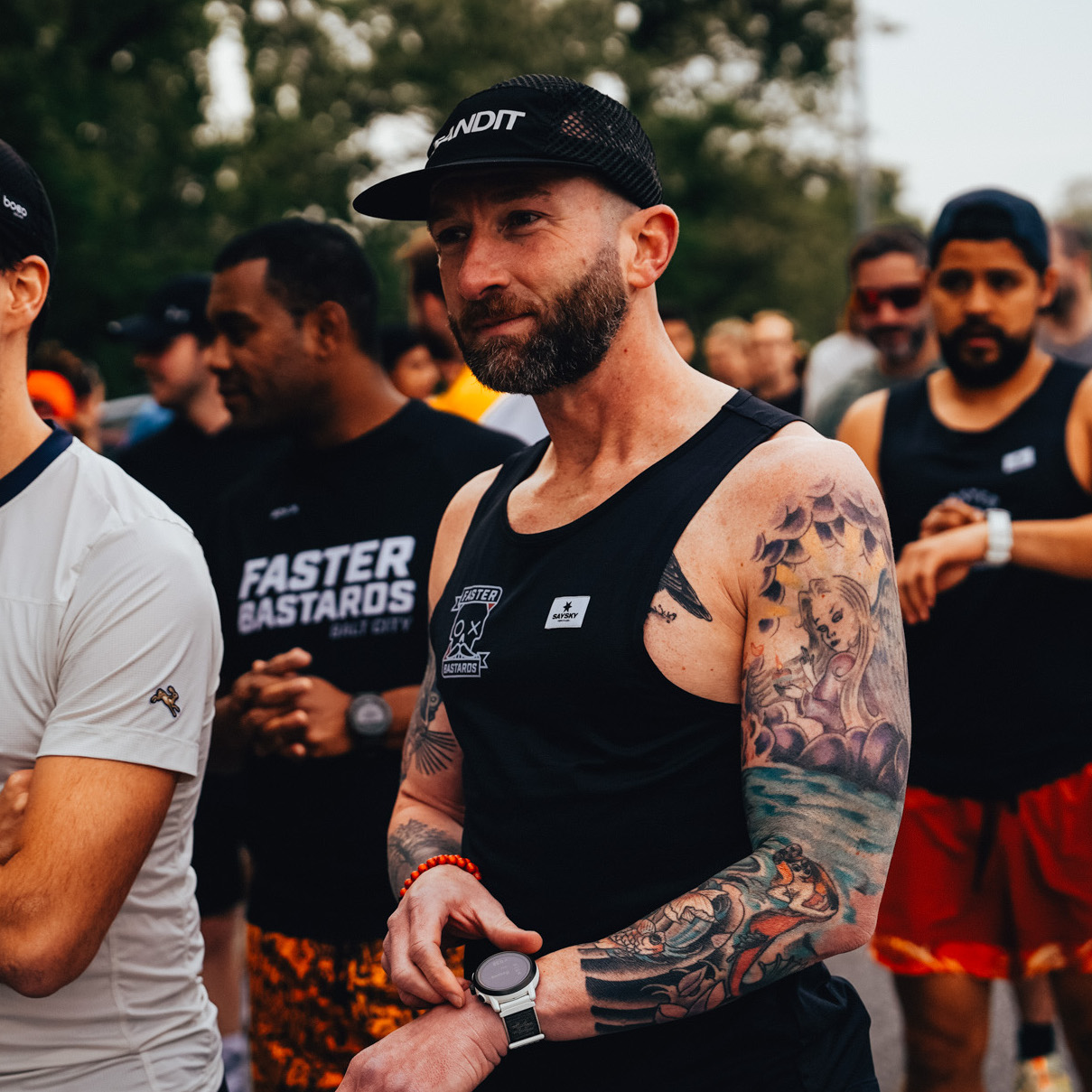
Matt is a recovering triathlete who fell in love with running and left the dark side behind. Trail and ultra running are where he is most in his element, but he can still be found routinely running the streets in and around Baltimore with the Faster Bastards. Aside from running, he is a lover of coffee, mezcal, beer, and 90s country music.
More from Matt Read Article
Read Article
